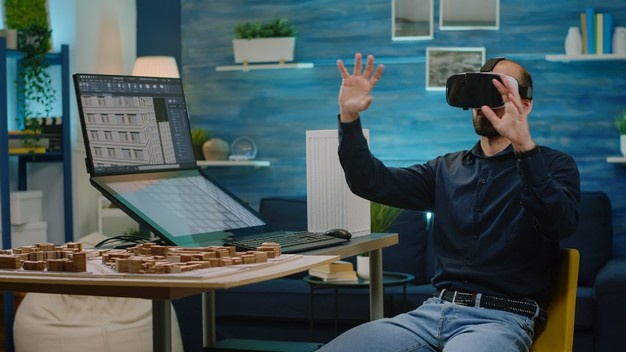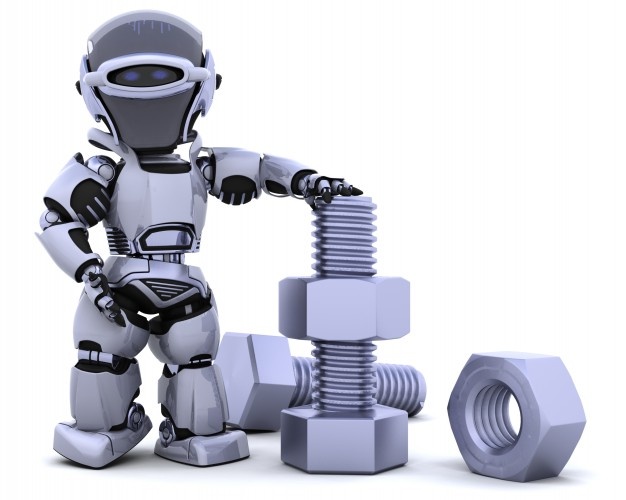
In the construction industry, technology has been a huge game-changer. It’s changing how we design and build buildings, homes, and other structures. But it’s not just about being able to do things faster or cheaper- it’s about making everything safer for people who work in these industries.
The latest innovations have made construction jobs less physically demanding on workers by decreasing manual labor and increasing automation of tasks like drilling holes in concrete walls with robots instead of humans. The following are 4 construction tech that companies need to adopt today.
1. Virtual Reality (VR)

VR has been used in the construction industry for now, but it’s still evolving. VR allows project stakeholders to visualize the final product before it’s built, which can help with decision-making and reduce mistakes during actual construction phases.
It can be used to help with design and planning, and safety training. For example, workers can use VR headsets to see what the finished product will look like and how they need to work together on-site to complete the project safely.
Construction companies can use VR to provide immersive experiences for clients and customers. Using this technology, they can demonstrate design concepts in real-time anywhere worldwide without having any physical models made or prototypes constructed. This can help save time and money for everyone involved.
Virtual reality has the potential to change how employees are trained, too. For example, VR could be used in place of field trips or site visits when training new hires on safety procedures that need special attention, like using cranes or operating heavy machinery.
The technology allows workers to experience dangerous situations in a safe environment, so they’re better prepared when they start working on site.
2. Augmented Reality (AR)
AR is similar to VR, but it doesn’t create a completely virtual world. Instead, it overlays digital information onto the real world. This makes it perfect for construction because workers can see instructions or measurements directly in front of them as they work.
For example, construction workers can use AR to see the dimensions and placement of objects in their field of view. They can also use it to identify potential hazards or safety concerns.
This is a huge advantage over traditional methods like paper drawings or blueprints, which can be difficult to read and understand when you’re standing on a ladder or scaffolding.
AR can be used for more than just helping workers perform their jobs safely and efficiently, though. It could also help them learn new skills. For example, AR technology has been integrated into textbooks to make learning materials come alive by showing how things work in real life instead of abstractly describing concepts with words and pictures.
3. Robotics

Cobots are robots that work together with human workers to complete tasks. These machines can help in hazardous areas where humans would otherwise be at risk, like construction sites or potentially dangerous environments.
They operate under the supervision of their human counterparts and only take over part of the task if it’s safe for them to do so. This means they can work in close proximity to humans without posing any risk of injury, speeding up the process by allowing for more efficient multitasking.
4. Construction Management Software
Technology has made it possible to track progress and manage tasks on construction sites remotely using cloud-based software accessible from anywhere with an internet connection. Construction management software allows companies to manage large construction projects from start to finish.
This includes planning, design, staff scheduling, and more in one central location instead of having spreadsheets or other documents that are difficult for employees to access when they need them.
The technology can be used for everything, including estimating material needs based on the project’s specifications so that the correct supplies can be ordered and delivered on time and tracking employee hours to ensure that everyone is working on the right tasks at the right time. It can help construction companies keep an eye on their projects, no matter where they are in the world.
Conclusion
In conclusion, the latest construction technology has made jobs safer than traditional safety means such as traffic cones and easier for workers while also helping to improve communication and decision-making among project stakeholders.
By adopting these technologies, companies can save time and money while ensuring that their projects are safe and efficient. Construction companies that don’t adopt these technologies are at risk of being left behind.
Additional Reading:
- How to Choose the Right Technology for Your Construction Business
- 5 Road Construction Technologies to Help Busy Streets
- How Construction Companies Can Avoid Software Buying Mistakes






